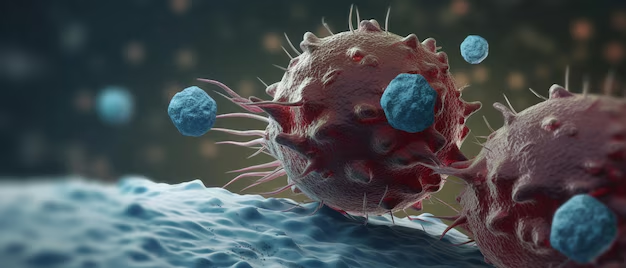
Image source: Public Domain
Following successful early access pilots with leading biopharma partners, Aignostics announced the general availability of Atlas H&E-TME, an application for analyzing the tumor microenvironment (TME) in H&E images. Atlas H&E-TME addresses a critical bottleneck in cancer research by extracting deep insights from routine H&E slides without specialized staining or multiplexing. It comprehensively analyzes whole-slide images in hours, enabling researchers to rapidly characterize immune cell populations, spatial relationships, and tissue architecture across multiple cancer types.
Atlas H&E-TME was created using Atlas, the leading foundation model co-developed by Aignostics, Mayo Clinic, and Charité Berlin. It delivers detailed readouts for quality control, seven different tissue types, and nine different cell classes in addition to over 5,000 higher-order quantitative metrics per image. Atlas H&E-TME is available as a self-service application, with integrations to major image management systems coming soon. The application has been extensively validated across primary and metastatic sites from a variety of labs and scanners to ensure generalizability to real-world conditions. Validation metrics can be provided to new partners upon request.
"This is the first time I have seen a model that demonstrates consistently high accuracy across multiple cancer indications with exceptional robustness," said Frederick Klauschen, MD, Co-Founder of Aignostics and Director of the Institute of Pathology at Ludwig-Maximilians-Universität München. "Understanding the TME is essential for developing effective cancer therapies, but traditional approaches are costly, time-consuming, and often limited in scale," added Viktor Matyas, Co-Founder and CEO of Aignostics. "Atlas H&E-TME changes this paradigm. Our pilots with biopharma have confirmed we can deliver high-quality results with unparalleled accuracy, speed, and scale, helping researchers get maximum value from every H&E image."
Atlas H&E-TME supports diverse research use cases, from rapidly identifying and characterizing tumors with immune infiltration to integrating H&E data with spatial transcriptomics for refined cell niche analyses. The application will initially be made available to biopharma partners for breast, bladder, colorectal, liver, and lung cancer. Academic access will be introduced in the coming months, along with additional cancer types and analyses.
By subscribing, you agree to receive email related to content and products. You unsubscribe at any time.
Copyright 2025, AI Reporter America All rights reserved.